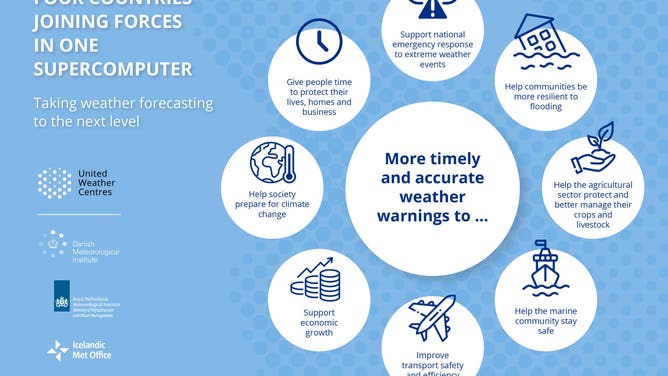HP building supercomputer to improve weather predictions
The supercomputer is part of a collaboration between weather offices in Denmark, Ireland, Iceland and the Netherlands.
HOUSTON – The battle of the weather models will be heating up with the addition of a new supercomputer that meteorologists hope will improve weather forecasting.
Hewlett Packard Enterprise announced Wednesday that their team is working to build the system for a coalition of European countries known aa the "United Weather Centres-West".
Denmark, Ireland, Iceland and the Netherlands are all taking part in the venture that meteorologists say will significantly improve short-term weather forecasting.
"As European nations continue to face challenges with new, dynamic weather patterns caused by climate change, weather forecasters will need powerful high-performance computing capabilities to evolve weather models and simulate vast amounts of complex data to unlock accurate, real-time forecasts," Bill Mannel, vice president and general manager at HPE, said in a statement.
Meteorologists say the new computer system could be operational in 2023 and be able to perform 4,000 trillion calculations per second.
The new weather system will join dozens worldwide that help meteorologists plan everything from short-term forecasts to long-term climate studies.

Met Éireann is joining forces with several other countries to improve short-term weather forecasting.
(Met Éireann)
Even after the new system is operable, the Global Forecast System (GFS), run by the National Oceanic and Atmospheric Administration, will still be one of the most powerful weather computers on Earth, performing an estimated 5,000 trillion calculations per second.
"The UWC-West supercomputer is the first step in a powerful collaboration between weather services in Europe, and it is vital that we continue working closer together to improve our weather forecasts and understanding of how climate change will impact our countries," said Marianne Thyrring, the UWC-West Chair.
Met Éireann, the Irish Meteorological Service, said that even with the new supercomputer, plans are still underway to develop a forecasting system as part of a broader collaboration of European nations by the end of the decade.